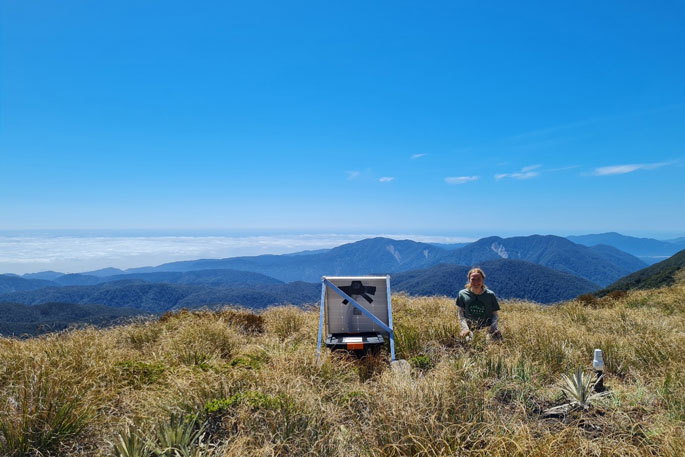New research has revealed an unlikely source for the unique volcanic activity in the Taupō region, one of the most volatile volcanic fields on the planet.
The enormous magma chamber under Ahi Tupua, a volcanic region stretching from Tokaanu to Kawerau, has fuelled some of the largest prehistoric caldera volcano eruptions, so scientists are keen to understand what is fuelling the rumbling grounds.
Research funded by Natural Hazards Commission (NHC) Toka Tū Ake has now disclosed that ocean water 200km deep underneath the Hikurangi Subduction Zone is pushed into the Earth’s mantle by the Pacific tectonic plate, which causes the mantle to melt and produce enormous amounts of magma.
Lead researcher Olivia Mark says that previous research by fellow Victoria University of Wellington scientist Dr Simon Barker found traces of fluid in volcanic rock from Taupō and her Masters project focused on finding the source.
“My area is in geophysics, so we tried to explain the ‘where’ and ‘why’ of those previous discoveries, using earthquake data from the GeoNet network,” says Olivia.
She took advantage of the expansive GeoNet network of seismic stations across the North Island to analyse existing earthquake data, but found additional data of smaller earthquakes deep beneath the North Island to locate where the tremors originate.
“Some of the smaller earthquakes are not always picked up by the GeoNet network, but we could detect traces of many smaller shakes, so we manually extracted that data and added that to our software programmes to find earthquakes deep inside the Subduction Zone,” says Olivia , who also used data from a temporary seismometer network installed by another Victoria University project team.
By using data from seismic stations around the North Island, Mark pinpointed 397 intermediate-depth earthquakes over 29 months, within the Pacific tectonic plate that dives under the Australian plate, and coinciding with fluids being released the into the Earth’s mantle.
NHC’s Head of Research, Dr Natalie Balfour, is excited to see how the investment in Olivia’s project and the GeoNet network is paying off in multiple areas.
“NHC provides funding for GeoNet to monitor current seismic activity, but it is wonderful to see how the accumulated data is also used by Olivia and scientists around the world to better understand earthquakes, but also our volcanoes,” says Balfour.
Mark’s findings and the wider research project by Professor John Townend and Dr Finn Illsley-Kemp, also funded by NHC’s University Research Programme, has been recently published in the prestigious global Journal for Geophysical Research.
Supervisor Dr Illsley-Kemp says Olivia’s work is a terrific example of collaboration across different geosciences.
“It is a great example of geophysics, which tell us what is happening right now, using earlier findings from geochemistry, that tell us what has happened in the past.”
Olivia says her research have given scientists vital explanations to why Ahi Tupua is the most active volcanic area in the world.
“But this is also important for the community to build better understanding and awareness around the fact that many people in the North Island are living on top or near a very active volcanic field.”
The last major eruption of Taupō volcano around 1800 years ago was one of the most violent eruptions in the past 5000 years, spreading 1cm of ash across New Zealand.
Olivia says unlike earthquake sequences, volcanic eruptions do not follow patterns and are difficult to predict.
NHC’s Balfour acknowledges that new information may make some people anxious about living with volcanoes, but says it is always better to understand and be prepared.
“It is important to be aware of our natural hazards and know what to do, but not to worry too much about it. The chance of a major eruption in our lifetime is low and they usually have a lot of earthquake activity beforehand, so the community can take some actions.”
- SunLive



0 comments
Leave a Comment
You must be logged in to make a comment.